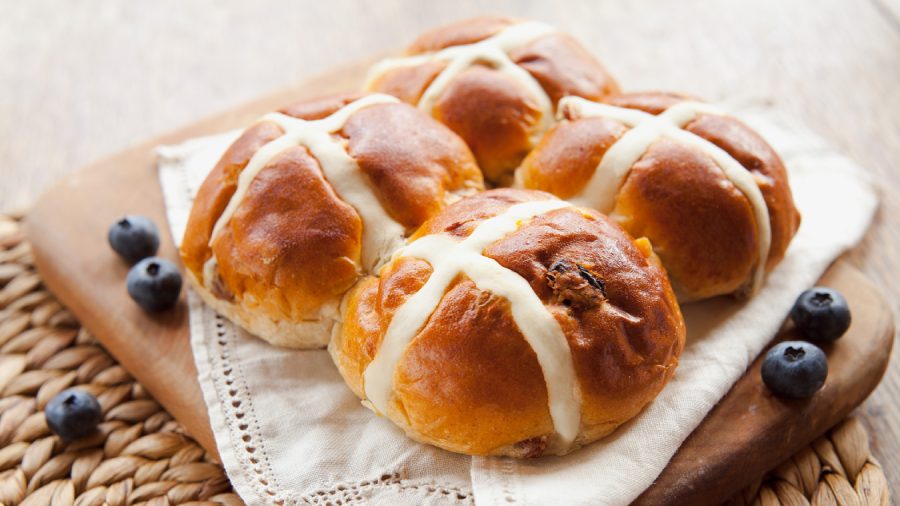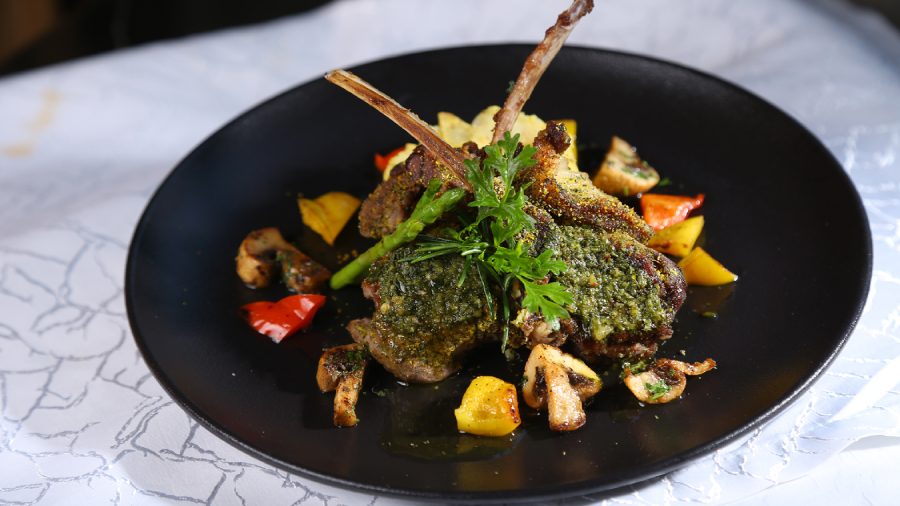As I sit to write this piece about the most ‘hopeful’ of all festivals that are observed globally, one that by its very essence signifies rebirth, fertility and prosperity, I cannot but think back to Easter two years back. The first of the many uncertain ‘lockdowns’ had just started, but fortunately, we had been allowed to sell bread as an essential commodity and I used to drive down to work every day in what seemed like a surreal environment, almost out of a bad dream.
There was an eerie, pin-drop silence all across the city; it was almost impossible to spot another person in the fashionable Park Street where generally there is not even space to place a pin. I recall seeing full-grown horses galloping across a deserted Park Street and some adventurous street kids playing cricket on the main carriageway. All in all, it was something that I had never imagined or dreamt of, and yet it was real and changing with each day, sometimes getting worse, only to get better, only to get worse still.
As the days passed, one could easily understand our personal futility in the scheme of things, the most influential and prosperous people had no control over how life was treating them. If the entire episode taught us anything, it was a big lesson in humility and restraint.
Cut to today, our markets, airports and restaurants are buzzing once again, things have gotten back to the ‘old normal’ and this alone, to me, is the true essence of festivities such as Easter, which is to say, ‘hope’ supersedes all despair and that things will get better in the end, if it’s not better yet, it’s not the end yet.
The thing that really excites me about Easter, however, is to see the little child brought out in us. It’s interesting to see grown-up chefs discussing the pattern of the Easter egg or the colour of the bunny’s bow or the frill of the Easter bonnet.
Also, I think Easter is by far the most ‘symbolic’ of all festivals... right from the symbolism of the egg as the symbol of rebirth, the bunny a symbol of fertility, and 11 marzipans on the simnel cake as a symbol of Jesus’ true disciples. Also there is folklore galore right from the Easter egg hunt to the silencing of the bells in France and burning of Christmas trees in Germany. I think Easter is the time to reiterate our faith in customs and traditions and to enjoy the company of friends, relatives and especially children.
History of Easter
Easter is the most important festival of the Christian church year and it celebrates the Resurrection of Jesus Christ on the third day after His Crucifixion. The origins of Easter date to the beginnings of Christianity, and it is probably the oldest Christian observance after the Sabbath, which is also regarded as the weekly celebration of the Resurrection.
Many cultural historians have inferred that in the celebration of Easter there is a convergence of the three traditions — Pagan, Hebrew and Christian. According to St Bede, an English historian of the early 8th century, the word Easter derives its name from Eostre, the Anglo-Saxon goddess of spring, to whom the month of April was dedicated. The festival of Eostre was celebrated at the vernal equinox when the day and night are equal.
But it is pointed out by some that the Easter festival, as celebrated today, is related to the Hebrew tradition, the Jewish Passover, being celebrated during Nisan, the first month of the Hebrew lunar year. The Jewish Passover under Moses commemorates Israel’s deliverance from about 300 years of bondage in Egypt. It was during this Passover in 30 AD that Christ was crucified under the order of the Roman governor Pontius Pilate as the then Jewish high priests accused Jesus of ‘blasphemy’. The resurrection came three days later, on Easter Sunday.
The Feast of Easter was well established by the second century. But there had been a dispute over the exact date of the Easter observance between the Eastern and Western Churches. The East wanted to have it on a weekday because early Christians observed Passover every year on the 14th of Nisan, the month based on the lunar calendar. But, the West wanted that Easter should always be a Sunday regardless of the date.
To solve this problem the emperor Constantine called the Council of Nicaea in 325. The question of the date of Easter was one of its main concerns. The council decided that Easter should fall on Sunday following the first full moon after the vernal equinox. But fixing up the date of the Equinox was still a problem. The Alexandrians noted for their rich knowledge of astronomical calculations were given the task.
And March 21 was made out to be the perfect date for the spring equinox.
The dating of Easter today follows the same method. Accordingly, churches in the West observe it on the first day of the full moon that occurs on or following the spring equinox on March 21. It became a movable feast between March 21 and April 25. And till today, some churches in the East observe Easter according to the date of the Passover festival.
The preparation takes off as early as the Ash Wednesday from which the period of penitence in the Lent begins. We at Flurys celebrate this holy festival throughout the later part of Lent and each year come out with a special menu unique to the followed customs and traditions. In effect, it is the best-celebrated event in the Flurys calendar, only after Christmas.
Easter Food traditions
Like all other festivals, Easter has its own unique food traditions, especially so since it falls after a 40-day fasting period. The most recognisable Easter food traditions, however, centre on the Easter egg and the Easter bunnies. The Easter bunny is a symbol associated with fertility and the reason behind it is that it has a very quick speed of reproduction.
There are many legends associated with the history of the Easter bunny. As mentioned earlier, some legends suggest that this grand festival Easter got its name from Eostre, who was always seen along with her pet bunny rabbit. It is said that it was this very bunny of the goddess that had laid the first coloured eggs.
According to pre-Christian fertility lore, the hare and the rabbit were the most fertile animals known and they served as symbols of the new life during the spring season. The bunny as an Easter symbol also seems to have its origins in Germany, where it was first mentioned in German writings in the 1500s. The first edible Easter bunnies were made in Germany during the early 1800s and were made of pastry and sugar.
We at Flurys too have celebrated the bunny and have come out with an entire range of confections depicting the cute bunny. So you have chocolates and marzipans and even cupcakes dedicated to the Spring Bunny.

It is said that the cross on the hot cross buns signifies the crucifixion of Jesus Christ and the spices signify the spices that were used to embalm Christ after his death. It is said that the Hot Cross buns made on the Good Friday do not go mouldy during the following year and also have potent healing powers against many dreaded diseases
Another well-recognised symbol of Easter food is the humble ‘hot cross’ buns which have a great significance in the history of Easter as a community festival. It is said that the cross on the hot cross buns signifies the crucifixion of Jesus Christ and the spices signify the spices that were used to embalm Christ after his death. It is said that the Hot Cross buns made on the Good Friday do not go mouldy during the following year and also have potent healing powers against many dreaded diseases.
Another belief is that the Hot Cross buns were made for celebrating the Goddess of fertility ‘Oestre’ and the cross divided the bun into four parts, each signifying a season. Be that as it may, the Hot Cross buns are an enduring symbol of Easter observance and we here at Flurys make multiple batches of these right through the Good Friday into the Easter. In fact, we bake our first batches very early in the morning, to be available for the people to eat before the Lenten fast.
On the savoury side, Roast Lamb is a traditional Easter dish that is enjoyed across the world in many forms. For Christians, the lamb signifies the sacrifice of Jesus Christ, since Jesus has also been called the ‘Lamb Of God’. The sacrificial lamb is also mentioned in Christian holy books. Mostly, roast leg of lamb is prepared on the day of Easter but many different preparations, based on history, climate, culture and tradition are also cooked to commemorate the significance of the lamb in Easter festivities.
Make your own
I am giving two simple but traditional recipes (see boxes) that can be easily prepared at home during the Easter festivities. Lamb chops are easily available these days and make for a nutrient-rich, tasty meal that can be cooked quickly and looks elegant. You can ask your butcher to make even-sized lamb chops with a little bit of fat. Try and find lamb as opposed to the goat which is more prevalent in our country.
Another recipe is that of the famed Easter Pannetone, also known as ‘Kulich’. These rich breads are simple to make but require a bit of patience. These also make for a great Easter gift or something to be had warm, slathered with unsalted butter with your Sunday afternoon tea.
Vikas Kumar is the executive chef of Flurys. You can reach him at vkumar@flurys.com
RECIPE

Pan Grilled Lamb Chops With Mint Pesto
Ingredients
• Lamb chops: 6 (around 120g each, ¾ inch thick)
• Garlic: 10g
• Rosemary: 2g
• Olive oil: 10ml
• Salt/ Pepper: To taste
#For pesto
• Melon seeds: 50g
• Garlic: 2g
• Olive oil: 20ml
• Fresh mint leaves: 50g
• Salt/Pepper: To taste
• Parmesan cheese: 25g
• Lemon Juice: 20ml
Method
In a blender, puree the garlic, olive oil, rosemary, salt and pepper.
Marinate the lamb chops in this mix. Leave them marinated for at least 2 hours in the refrigerator. Take out one hour before cooking so that those are at room temperature.
In a hot grill pan, cook the lamb chops for around 3 minutes on each side for medium-well doneness. Do not cover the pan or add any moisture.
For the pesto, pulse all ingredients until coarsely ground.
To serve, drizzle the pesto liberally over the lamb chops and serve with your favourite grilled vegetables.

Easter Pannetone
Ingredients
• Flour: 165g
• Raisins: 55g
• Cherry: 20g
•Mixed Peels: 20g
• Butter: 35g
•Milk: 50ml
• Lemon zest: ½
• Eggs: 1
• Sugar: 20g
• Yeast: 10g
• Salt: 10g
• Mixed Spices: 10g
Method
Mix the yeast, sugar, salt and a little bit of flour along with all the milk.
Let the mix rest for 30 minutes until frothy.
Add the remaining flour and all dry ingredients.
Rest the dough for 1 hour.
Divide into 200g pieces of dough and put it into pannetone moulds. Let the dough rise for 1-2 hours until double in volume.
Brush with milk and bake in a preheated oven 180°C for 30-35 minutes
Brush with hot jam and serve.
